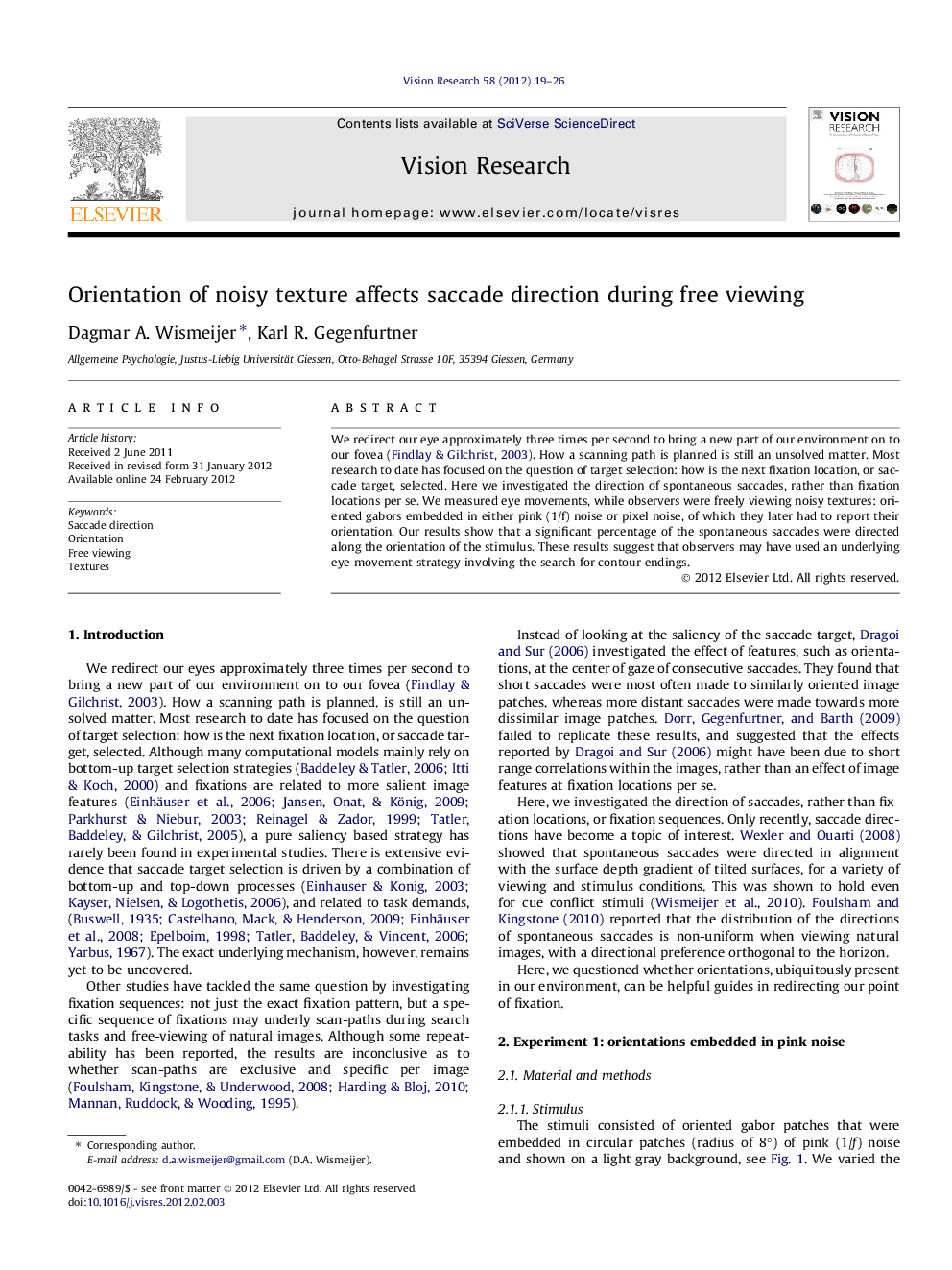| Article ID | Journal | Published Year | Pages | File Type |
|---|---|---|---|---|
| 4034042 | Vision Research | 2012 | 8 Pages |
We redirect our eye approximately three times per second to bring a new part of our environment on to our fovea (Findlay & Gilchrist, 2003). How a scanning path is planned is still an unsolved matter. Most research to date has focused on the question of target selection: how is the next fixation location, or saccade target, selected. Here we investigated the direction of spontaneous saccades, rather than fixation locations per se. We measured eye movements, while observers were freely viewing noisy textures: oriented gabors embedded in either pink (1/f) noise or pixel noise, of which they later had to report their orientation. Our results show that a significant percentage of the spontaneous saccades were directed along the orientation of the stimulus. These results suggest that observers may have used an underlying eye movement strategy involving the search for contour endings.
► Investigated direction of spontaneous saccades while free viewing noisy textures. ► Spontaneous saccades were directed along texture orientation. ► This effect was already present in first saccades. ► Small saccades (amp ⩽1°) were almost orthogonal to orientation of textures in pink noise. ► Underlying strategy for eye movement pattern might be related to contour finding.
